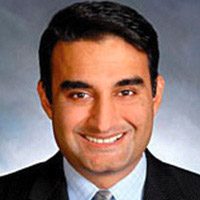I use the OPD-Scan III to help me best customize the implant to each patient. By looking at the data the OPD III provides, I can select which implant best suits the eye of the patient. Sometimes we use a different implant in one eye and in another eye, it all depends on the eye’s quantitative number that I’m able to obtain from the OPD. Also, I am able to demonstrate these maps in the exam room to the patient so both the patient and/or family member is able to understand it; a disease process or their ocular numbers so they can best accept my recommendation whether it be a toric implant or monofocal implant or multifocal or even an accommodative implant.
Group: OPD-Scan III Wavefront Aberrometer
Mitchell Jackson, MD
We added the OPD-Scan III to increase efficiency in the practice and capture as many data points as possible in the shortest amount of time. It delivers corneal topography, wavefront analysis, higher-order aberration data and angle kappa for both eyes in 20 seconds or less. That indirectly allows us to see more patients per hour, which improves our bottom line. It gives me a lot of bang for my buck and a superior understanding of the total visual system.
Richard Hoffman, MD
I have found the OPD to be an invaluable tool for both pre-operative and post-operative evaluation of our patients. The diagnostic summary allows me to assess and confirm the need for toric IOLs and limbal relaxing incisions and we now perform this as part of our preoperative work up in most of our cataract patients. The wavefront refractions have also been extremely reliable and helpful for our difficult refractions in pathologic eyes. Our technicians find it easy to use and everyone is pleased with the additional diagnostic information available.
Mark A. Jank, MD
The OPD-Scan III amasses in a single source a multitude of information that is necessary for modern IOL selection and cataract surgery. Instead of moving patients around for testing, we take them to one workstation. From their perspective, it’s one test. The OPD-Scan III not only gathers the essential data more efficiently, but it also gives us data that we didn’t even know were essential until now.
Edward Hedaya, MD
The OPD-Scan III performs many functions in seconds. If a practitioner understands its multiple scanning methodologies they will raise their level of care to their patients. Pupillometry, IOL positioning, retro illumination of cataracts, angle kappa, tear film evaluation, corneal topography, corneal power assessment for post refractive patients, and other functions makes this instrument a fundamental requirement to practice in the 21st century. All of this is collected in seconds! We have come to recognize in our practice that OPD is a necessity – not luxury. After you learn how to use the myriad of functions that is collected in seconds, you can use them to educate your patients and enhance their confidence in you – their ‘expert’.
Bonnie Henderson, MD
Of all the technologies that I utilize for preoperative evaluation of my cataract patients, I believe the OPD-Scan III is one of the most important. I depend on the OPD III to evaluate the astigmatism, aberration, and topography of the cornea. It is also extremely useful to check the toric IOL placement after surgery if rotation is suspected. I use the OPD III on every single one of my preoperative patients.
Faisal Haq, MD
When I do an OPD measurement, it actually gives me refractions under mesopic and photopic conditions. Depending on the patient, I’ll give them a night pair of glasses or I’ll give them one pair for nighttime driving and one for the day. The OPD really helps us to accomplish this and helps us really help our patients in a way that we weren’t able to do so before.
Arun Gulani, MD
The OPD-Scan III helps us to understand the reasons patients complain whether they came for the first visit after getting glasses from the optometrist and looking into refractive surgery of a premium surgery so we can have a satisfactory outcome. To me, practice efficiency is more important than seeing how many patients you can see in an hour, it also means consistent outcomes that you and the patients aim for. So you get practice efficiency from the OPD for many reasons: 1) Takes up very little space with all-in-one tests in one station 2) The speed of doing the test and the ease of which the staff can get trained and comfortable is excellent with repeatable consistent data which is very important to me when using technologies like these. I have happy patients, less re-treatments, more consistent outcomes – that is the higher level of excellency.
Barrett Ginsberg, MD
As a startup practice specializing in advanced cataract surgery and corneal surgery, the OPD-Scan Ill was one of my initial investments due to its multi-functionality. It has quickly become a quintessential piece of machinery used in our practice. Its execution of autorefractions and corneal topography is precise, granting shorter office visits and cost efficiency for our patients. Unlike other corneal topographers used in the past, aligning the patients whilst simultaneously maneuvering the OPD is smooth, making human error and patient uneasiness obsolete. Due to its precise measurements and accessibility, the OPD is a wonderful asset to our practice.










